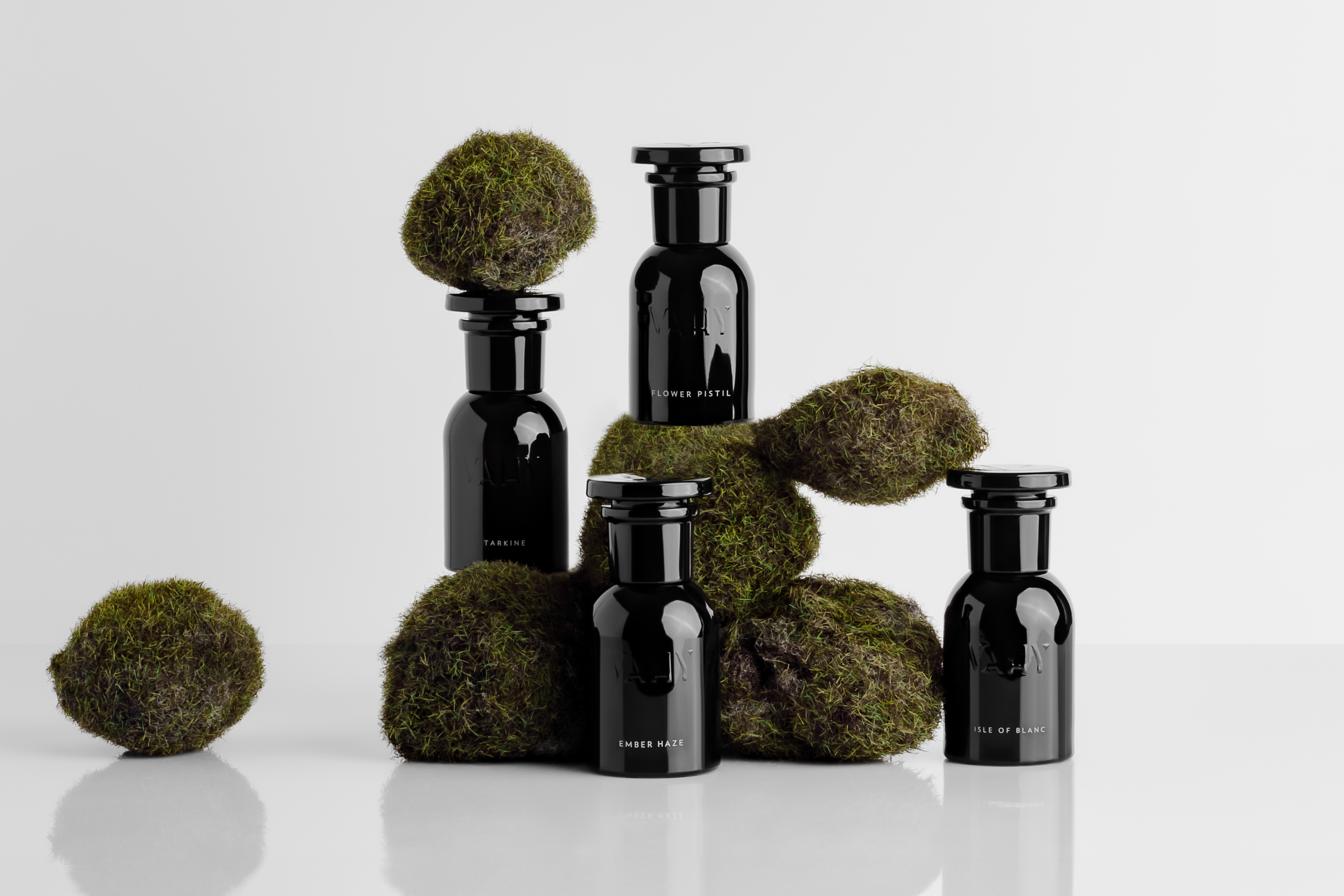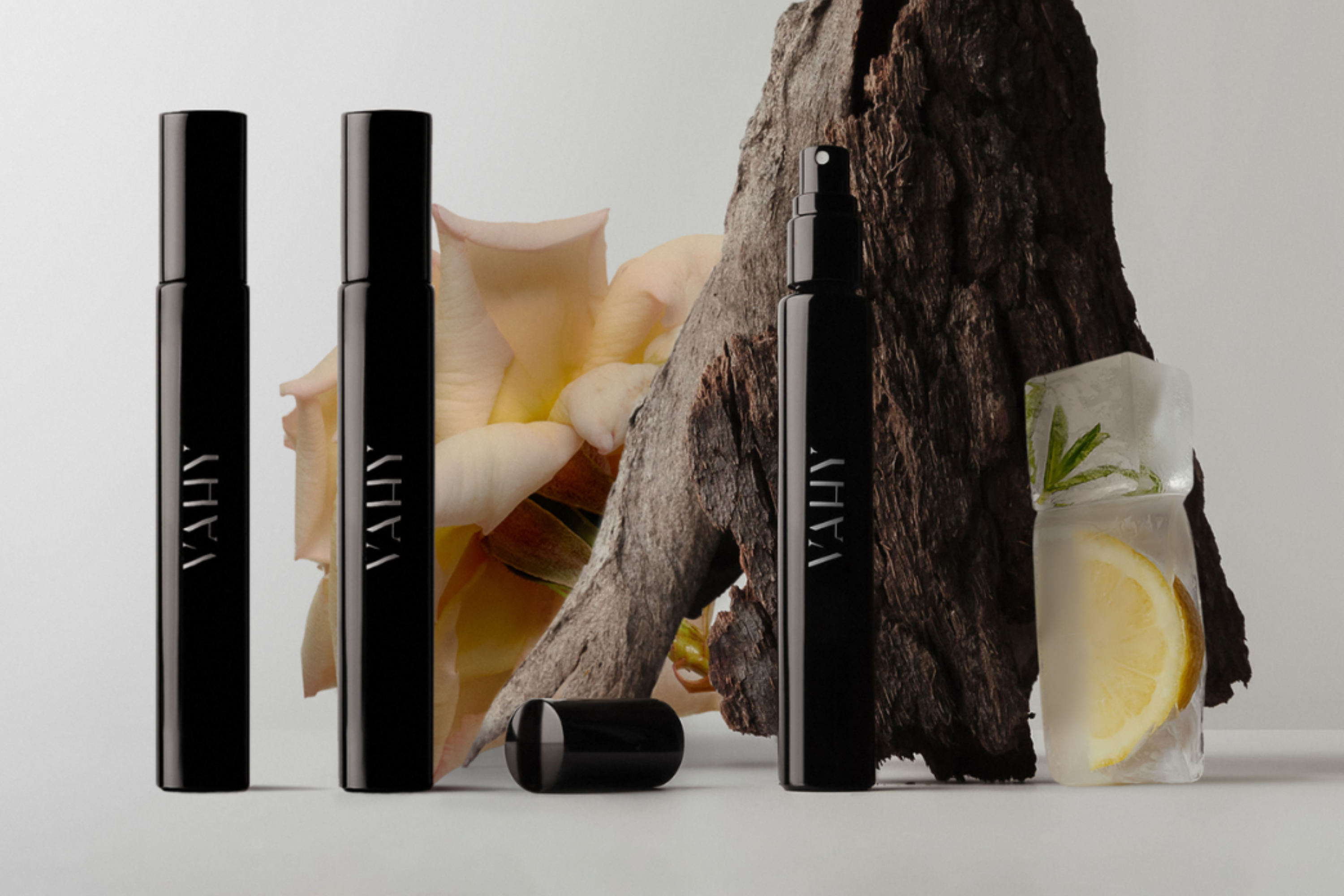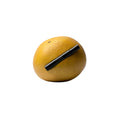
Welcome to the new dawn of low-tox perfume.
Have you heard of a “clean perfume” or “clean fragrance”?
Sitting on the floor of her mum’s terrace, sifting through towering boxes of old family photographs, Rosie Johnston had an ‘ah-ha’ moment.
“I was reliving all the memories they captured, as you do, and it dawned on me that we live 90 per cent of our lives in these ‘moments in between’,” says the founder of beauty brand By Rosie Jane. “Those joyful moments — the ones that are blown out or not in focus or where someone pulls a funny face — are the ones that are so much richer than that one picture where everyone is perfectly posed together.”
That trip down memory lane served as the inspiration for her latest ‘clean’ fragrance, Missy. It smells like her childhood growing up in Australia. The fragrance has joyous notes of frangipani and coconut. It recalls “my mother slathering sunscreen on me at the beach as a redhead!”
Childhood, specifically the birth of her firstborn, sparked her journey from make-up artist to clean perfume creator.
“It dawned on me as I was breastfeeding that I didn’t actually know what was in the fragrance I was wearing. Sure, I had chosen the notes and blended them together, but I couldn’t give you one single ingredient name in any of them,” says Rosie.
“That opened up a can of worms for me. I was suddenly questioning how my own fragrance was made, what it was made from and why there was a ridiculously long list of ingredients I couldn’t pronounce. I worked with a fragrance house to create a non-toxic version … people didn’t really know what clean fragrance meant back then.”
To be fair, the definition is still murky. “Clean” means different things to different fragrance houses and it’s also not the same as “natural”. Plus, there are no regulatory laws around using these terms.
“The overall consensus is that clean fragrances have removed some of the most harmful synthetic toxins … And maybe more transparent with their ingredient list, which may or may not contain natural ingredients,” says Lucy Bradshaw, founder of Tulita, a plant-based fragrance brand. Tulita avoids synthetics like parabens, phthalates, petroleum, PEG, aluminium and silicone, and discloses its full ingredient list online.
The fragrance industry is largely unregulated. There is a voluntary code of compliance and the International Fragrance Association (IFRA) has a “transparency list” of 3000+ chemicals. However, not all are without contention.
Phthalates, for example, is a broad term for chemicals that make plastics soft. It enables the scent of fragrances to last longer on the skin. Some research indicates that phthalates may be harmful to health.
“Phthalates have been known as a hormone disruptor that can impact fertility,” says Lucy. “They are banned in higher concentrations in Australia but still permitted in lower doses.”
Another hotly debated ingredient in the fragrance world is musk. It was once extracted from male deer testicles. Today, musk fragrances are made in a lab, sometimes from petrochemical compounds.
“The opposite of what you would want on your body or in your bloodstream!” says Anna Weatherlake. Anna is a co-founder of the fragrance house Váhy.
Anna also says research has found that some synthetic musks can endure in human tissue and fats (including breast milk). “These chemicals not only accumulate in your body, but they are also accumulating in the environment and do not biodegrade.”
They do serve a functional purpose in fragrance though, helping give longevity to scents.
“Perfumery wouldn’t exist in the complexity we see today without synthetic musk,” says Rosie. “I think there are definitely ingredients that are unnecessary and should be removed, and I certainly lean into being clean. But the way I see it, it’s a bit like … if you bake an organic cake, the organic part is just a bonus.”
At the heart of the clean perfume debate is the issue of disclosure. Kate Macdonald, a former corporate lawyer, launched Váhy with Anna. Her motivation came after discovering that fragrance companies did not have to label the chemicals in their perfumes. “In Australia, you only have to label the umbrella terms ‘fragrance’ and ‘denatured alcohol’ and a very small list of known allergens,” says Kate. “We were astounded that, in this day and age, people could be unknowingly spraying hormone disruptors on their pulse points,” she says.
Until recently only a handful of small brands that eschewed synthetics were breaking new ground in terms of sophistication, design and longevity.
“The greatest challenge was creating something world-class with a limited palette,” says Anna, who adds that the trade-off for purity can be the cost. “You can buy petroleum-based synthetic rose fragrance for US$11 a kilogram while the same amount in 100 per cent natural can cost more than US$10,000,” says Anna. “But you are paying for a premium product that is better for you and the planet.”
Ultimately the perfume you choose is very personal. For Rosie, it’s the way fragrance makes her feel that is most important. “I tend not to go for fragrances that aren’t clean anyway because they are often very strong,” she says. “Though I do keep both my mum and grandmother’s perfume on my dresser. Neither one is clean but when I smell it, it instantly takes me back to my old house where my mum is doing her hot rollers and the radio is on and I am getting ready to go to school in the morning. And I love that. That’s the power of fragrance.”
Try this:
The ‘cleanest’ way to apply perfume According to Mukti, author of Truth In Beauty. “Applying perfume in a well-ventilated area or outdoors and avoiding direct contact with the skin can help reduce exposure,” Mukti explains. “For indoor application, opening windows and doors then taking a deep breath, blocking your nose, spraying once and walking through the mist as you leave the room allows the fragrance to adhere to your clothing.
Read the article on The Australian Women’s Weekly website here.



